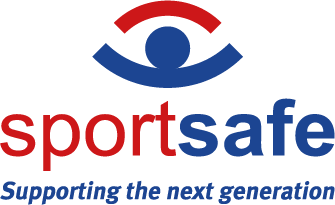No products in the basket.
Linking the mind to the body to release the potential of the whole individual person is fundamental to a purposeful education.
‘I think, therefore I am.’ (Rene Descartes)
However, the quality of this self-discovery, learning and development journey can be or enhanced, or damaged, for each child by the educational opportunities available. Teachers and educationalists know this. They know that their input and the learning environments they create have immense impact on the quality of each pupil or student’s academic and general learning journey – potentially affecting their future lives too.
Eek!…big responsibility…scary
…but, also, fantastic…amazing opportunity…life-changing…
‘Learning experts say that more than 85 percent of learning that happens in the workplace takes place through non-formal and informal activity,’ Fi Hills Mind Nudge Designer @Mind Nudger AI LinkedIn.
This may be referring to the workers and colleagues of the future but the value and impact of undirected learning and interaction in schools and colleges can also be underestimated. Essays to write, research to do, formulae to compute, groups to work with, tasks to complete, deadlines to meet, exams to pass are all part of a vital formal education – but the opportunity to think independently, to discover unguided… to be innovative, original, engaged, progressive and to make mistakes are also vital skills.
Step forward ‘Experiential Learning’.
“There are two goals in the experiential learning process. One is to learn the specifics of a particular subject, and the other is to learn about one’s own learning process… Experiential learning activities and programs are based around experience but have clear, measurable outcomes.” David A. Kolb – David A. Kolb’s ‘Experiential Learning Theory’.
“In experiential learning, participants are immersed in the ‘experience,’ be it real or imagined. This means that the design must always put the learner at the centre of the learning and empower them to explore, experiment and when necessary, create.” – Fi Hills Mind Nudge Designer @Mind Nudger AI LinkedIn
“The objective of any experiential learning design is to ensure that the ‘direct experience and reflective observation’ happens during the learning process. The way participants then process the experience and think critically about it, results in raised consciousness and understanding.” – John Dewey, Educational Reformer.
Have a mind that is open to everything and attached to nothing
Tilopa 988–1069
‘The objective of experiential therapy is to focus on the activities and, through these experiences, better identify emotions associated with success, disappointment, responsibility, and self-esteem.
Learning that is considered “experiential” contains all the following elements:
- Reflection, critical analysis and synthesis.
- Opportunities for students to take initiative, make decisions, and be accountable for the results.
- Opportunities for students to engage intellectually, creatively, emotionally, socially, or physically.
- A designed learning experience that includes the possibility to learn from natural consequences, mistakes, and successes.
During experiential learning, the facilitator’s role is to:
- Select suitable experiences that meet the criteria above.
- Pose problems, set boundaries, support learners, provide suitable resource, ensure physical and emotional safety, and facilitate the learning process.
- Recognize and encourage spontaneous opportunities for learning, engagement with challenging situations, experimentation (that does not jeopardize the wellbeing of others) and discovery of solutions.
- Help the learner notice the connections between one context and another, between theory and the experience and encouraging this examination repeatedly.
And the benefits of experiential learning?
- There is more room for creativity.
- It allows you to learn from mistakes.
- It encourages reflection and introspection.
- It’s easier to grasp difficult or abstract concepts.
- It prepares you for future experiences and adult life.
- Teachers observe improved attitudes toward learning.
Typical progress of thinking through experiential learning includes:
- Students have an experience.
- Students reflect on the experience – think about what went well, or not so well.
- Students critically analyse the experience – identify what it was that made the experience successful or not.
- Students plan future actions based on what they have learnt. Once they have decided what the problem was, they make a plan to improve and then try the same activity again, putting learning and reflection into action.
Experiential learning through Outdoor Adventure
Considering all the above – what better environment than the great outdoors to make the most of all that experiential learning potential! So many opportunities for pupils and students to connect with their own inner learning power through active engagement and exploration in an outdoor adventure situation.
Such an approach can be offered to schools and colleges by recognised providers such as the Forest School Association.
Forest School principles and criteria for good practice include:
- Planning, adaptation, observations and reviewing
- Observations and collaborative work between learners and practitioners. This structure should clearly demonstrate progression of learning.
- Support the development of a relationship between the learner and the natural world.
- Use natural resources for inspiration, to enable ideas and to encourage intrinsic motivation.
- The holistic development of all those involved, fostering resilient, confident, independent and creative learners.
- Build on an individual’s innate motivation, positive attitudes and/or interests.
- Play is recognised as vital to learning and development.
- Reflective practice is a feature of each session to ensure learners and practitioners can understand their achievements, develop emotional intelligence and plan for the future.
However, schools and colleges can also create excellent outdoor adventure education opportunities themselves for pupils and students of all ages. Any access to an outdoor area has potential for experiential, hands on, intrinsic learning. Gardening, offering discovery and investigation moments, can be accomplished in the smallest playground areas:
- Flower pots on a vintage ladder.
- Open shelves of flower and vegetable containers against a wall or fence.
- Old tyres, filled with soil make excellent contained miniature gardens.
- Planting pockets hanging from walls, fences and window sills maximise space and look fantastic.
- Create a living wall of shelves that could even be on castors to move around the playground or outdoor area and used as a space divider.
Careful consideration of surfacing in your outdoor areas can also make a world of difference. Outdoor adventure education does not have to stop just because it has been raining or snowing! Artificial grass, wetpour rubber, bonded mulch, grass mats and needlepunch carpet are just some of the surfaces that can transform your school playground or field into an all-round experiential escape.
Combine an all-weather surface with equipment that cries out for pupils and students to use their own imagination, investigate through play or solve problems through teamwork and, suddenly, learning horizons are expanded well beyond the classroom.
Find a corner for a natural material shelter, seating area… or even a stage! Performance, role-play, audience participation or even just quiet observation of others’ interactions are all part of vital un-directed learning and personal development – and your school or college can make it a continuously available opportunity by making the outdoors accessible all year round.
Similarly, although directed PE, Sport and Fitness lessons and clubs obviously provide essential physical skill guidance and development, why not also ensure that young people get the opportunity to test these skills out in their own time, in their own way to boost confidence and understanding in different life situations? Just a simple outdoor gym space allows hands on, individual, pair or group exploration of their own physical capabilities and learning how to improve and increase these skills.
‘We know that well-constructed and well-planned outdoor learning supports our children and young people to develop the skills of enquiry, critical thinking and reflection necessary to meet the unpredictable challenges of life in the 21st Century… We know children and young people enjoy first-hand experience outdoors… Such experiences motivate our learners to become successful learners and to develop as healthy, confident, enterprising and responsible citizens.’ – Gayle Gorman – HM Chief Inspector of Education.
“Children cannot bounce off the walls if we take away the walls”
Erin Kenny, Forest Kindergarten

